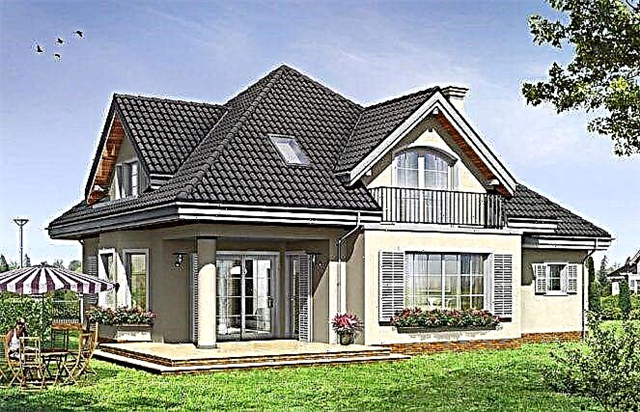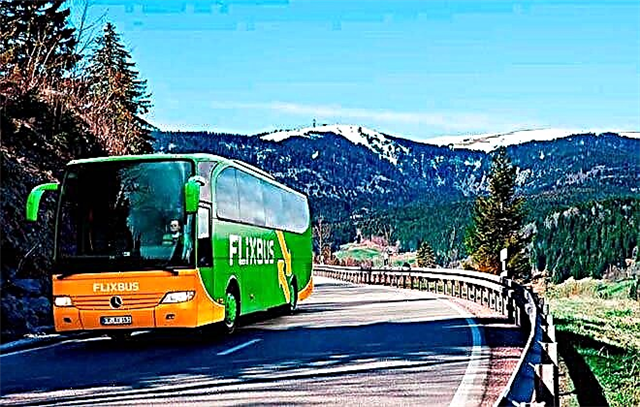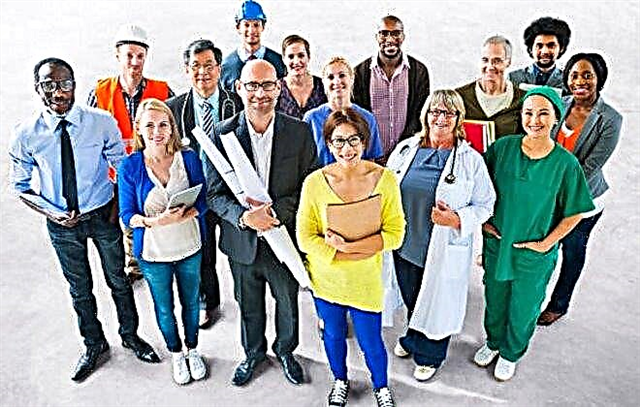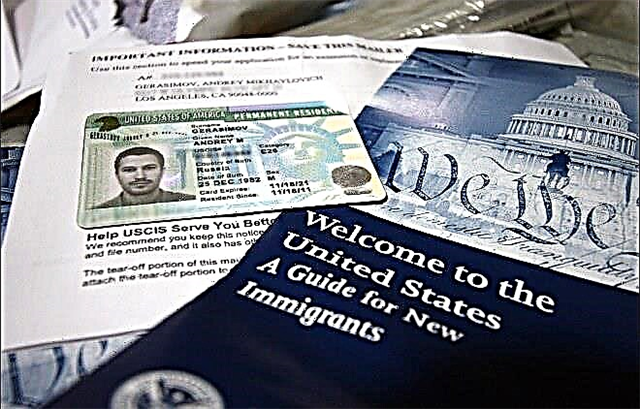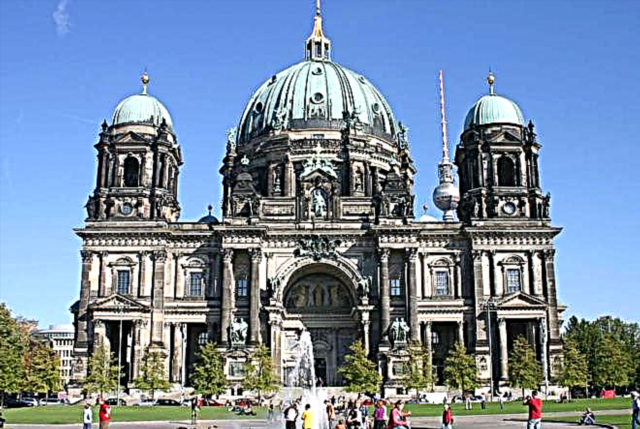Munich is the capital of Bavaria and one of the largest settlements in Germany. In addition to its research and industrial potential, the city boasts cultural treasures, which creates a wide scope for tourism. The temples, cathedrals and mosques of Munich occupy a special place among all the sights of the city.

Peterskirche Church
The foundation of the church was laid back in the 11th century, which makes it practically the same age as the city. Peterskirche is a great architectural monument with more than 600 years of history and combines 4 different styles: Romanesque, Gothic, Baroque and Rococo.
The interior of Peterskirche is no less pleasing: milky walls and a fresco of amazing beauty are eye-catching.

One of the central places in the church is occupied by the figure of St. Peter and the altar of the Virgin Mary, which is a composition of several statues.
The temple is located at Marienplatz - the main square of the city. There is an observation deck at the top of the chapel, which offers stunning views of Munich.
| Working hours | in summer: Mon – Fri: 9: 00–18: 30 Sat, Sun and holidays: 10: 00–18: 00. in winter: Mon – Fri: 9: 00–17: 30, Sat, Sun and holidays: 10: 00–17: 30 |
|---|---|
| Ticket price | admission is free, the cost of climbing to the observation deck for adults is 1.5 euros, children over 10 years old and students - 1 euro, visitors 6-10 years old - 0.3 euros, children under 6 years old - free |
| Landmarks | the main square of the city, next to the Marienplatz metro station. |
| Address | Rindermarkt 1, 80331 München |
Cathedral of the Blessed Virgin Mary
Frauenkirche - Cathedral of the Holy Mother of God, a gem of Gothic architecture. Construction began in 1468, and was completed only in 1525.
The abundance of white columns and the absence of windows make the interior of the temple unique. The painting on the altar illustrates the ascension of the Virgin Mary. On the walls you can see the gravestones that were moved from the closed cemetery near the church. The Gothic look is complemented by the "devil's footprint" - a dark shoe print located on one of the cathedral's slabs.

The Frauenkirche is the tallest cathedral in Munich thanks to its towers reaching 99 m in height. The bell towers are connected to a long nave, which is covered with red tiles and reminds many of Noah's ark.
After a referendum held in 2004, a temporary ban was introduced on the construction of buildings above 100 m, so the best view of the city opens on the observation deck of the bell tower.
| Opening hours | Mon, Tue, Wed, Sat, Sun: 07: 00-19: 00; Thu: 07: 00-20: 30; Fri: 07: 00-18: 00 |
|---|---|
| Ticket price | Is free. Ascent to the observation deck - 3 euros. |
| Reference point | Metro station Marienplatz. |
| Address | Frauenplatz 12, 80331 München, |
| Site | www.muenchner-dom.de |
Catholic Church Theatinerkirche
The Theatinerkirche is a collegiate Catholic church named after Saint Cajetan. The construction of the church took place in the years 1663-1690, but the facade of the building remained unfinished for 100 years due to disagreements among the architects. The front part of the facade is decorated with 2 coats of arms: the coat of arms of Bavaria and the coat of arms of the Commonwealth.
When designing the temple, the church of the Teatins in Rome was taken as a model, and everything was sustained in the style of the late Italian Baroque. The interior of Theatinerkirche is made in light colors with a predominance of white columns. The interior is decorated with detailed moldings and dark wood accents create a contrast.
| Opening hours | Daily 7: 30-23: 30 |
|---|---|
| Ticket price | 4 euro |
| Reference point | Odeonsplatz |
| Address | Salvatorplatz 2A, 80333 München |
| Site | theatinerkirche.de |
Ludwigskirche church
Ludwigskirche - University Church of St. Ludwig. The construction of the temple was approved by Ludwig I in 1829. The unstable political and economic situation of that time made it possible to complete the project only in 1844.
From the outside, the church stands out for its twin towers, a cross-shaped nave and a roof that is decorated with mosaics. Inside is the famous Last Judgment fresco, which is the world's second largest fresco. It is worth paying attention to the figures of Jesus and the evangelists.
| Opening hours | Mon and Fri: 09: 00-12: 00, Thu and Tue: 14:00 - 19:00 (parish office) |
|---|---|
| Ticket price | Free |
| Landmarks | Universität metro station |
| Address | Ludwigstraße 22, 80539 München |
| Site | www.st-ludwig-muenchen.de |
Azamkirche Church
Asamkirche is a church built by the Azam brothers in honor of St. John of Nepomuk. The official name of the church is associated with the name of the priest, but the people call it "Azamkirche", glorifying the surname of talented architects. The temple is unique in that it takes up a smaller area compared to other similar structures. Initially, the church was private and only after a while it became public. The entrance to the temple is decorated with a statue of John of Nepomuk with angels.
The authors of the project were not guided by the Catholic architectural canons. Inside, everything resembles rather palace interiors: an abundance of sculptures, the use of gilding and a rather bright design in general. Particularly noteworthy is the ceiling painting with scenes from the life of St. John.
| Opening hours | 9: 00-18: 00, Friday 13: 00-18: 00 |
|---|---|
| Ticket price | Free |
| Landmarks | Stopping Sendlinger Tor |
| Address | Sendlinger Str. 32, 80331 München |
| Site | erzbistum-muenchen.de |
Church of St. Michael
Jesuitenkirche St. Michael is a church built for the Jesuit order in the 17th century and is one of the most beautiful buildings of the Renaissance. The exterior of the church is reminiscent of the classic design of the city hall. The upper part of the facade is occupied by the figure of Jesus Christ, and at the entrance you can see the statue of St. Michael.
The church hall is quite large and the sense of scale is enhanced by the snow-white walls. Under the altar, in the underground chapel, there is the Wittelsbach crypt, where William V and other members of the dynasty are buried. Nearby there is a reliquary where Christian relics are kept.

The excellent acoustics of the room reproduces well the sounds of organ music during concerts (the schedule can be found on the website). On Christmas Eve, the church is popular and is often included in sightseeing tours.
| Opening hours | Mon, Fri: 10:00 - 19:00, Tue-Thu, Sat: 08:00 - 19:00, Sun 08:00 - 22:00 |
|---|---|
| Ticket price | Free |
| Landmarks | Karlsplatz Metro Station |
| Address | Neuhauser Str. 6, 80333 München |
| Site | http://www.st-michael-muenchen.de |
Lukaskirche church
Lukaskirche is a Protestant church located on the banks of the Isar River. The construction of the temple took place in 1893-1896. Architect Albert Schmidt gave the building features of the Romanesque style and was clearly inspired by the Gothic. The design familiar to these buildings is complemented by two towers and a high dome (64 m). The Church of St. Luke (Lukaskirche) has a unique interior and boasts colorful stained glass windows - the only element that suffered during the war. At the altar, you can see a painting that depicts the burial of Christ.
| Opening hours | Mon, Fri: 10:00 - 19:00, Tue-Thu, Sat: 08:00 - 19:00, Sun: 08:00 - 22:00 |
|---|---|
| Ticket price | Free |
| Landmarks | Tram stop Marienplatz |
| Address | Mariannenplatz 3, (Pfarramt: Thierschstraße 28), 80538 München |
| Site | https://www.sanktlukas.de/ |
Shrine of st paul
Paulskirche is a Catholic church named after St. Paul, which belongs to the parish of Ludwigsvorstadt. The construction of the church began in 1896 and was completed at the beginning of the 20th century. The architect Georg von Hauberrisser kept the image of the building in the neo-Gothic style.
The façade is decorated with characteristic sculptures typical of Gothic buildings. Paulskirche has one of the highest (97 m) towers among the temples in Munich, so it is not surprising that there is an observation deck here.
The interior of the church is also worthy of attention - the spacious hall immerses you in a medieval atmosphere. It will be useful to see the architectural composition "Carrying the Cross", created by the sculptor George Busch. The sculpture, executed in color, perfectly illustrates one of the last pages of the life of Christ.
| Opening hours | in summer: Mon-Fri: 9.00-18.30; Sat, Sun and holidays: 10.00-18.00 |
|---|---|
| in winter: Mon-Fri: 9.00-17.30; Sat, Sun and holidays: 10.00-17.3 | |
| Ticket price | Free |
| Landmarks | Theresienwiese underground station |
| Address | St.-Pauls-Platz 11, 80336 München |
| Site | http://www.muenchen.de/sehenswuerdigkeiten/orte/120355.html |
Temple of Saint Benno
The Catholic Church named after St. Benno was built at the end of the 19th century by the architect Leonhard Romeis.The temple occupies a worthy place among other religious buildings, made in the neo-Romanesque style.
The 63 m high towers complement the majestic image of the building.
Among the features of the interior, it is worth highlighting an exact copy of the Venetian mosaic.

After the bombing of 1944, the church was restored to its original form, but the original frescoes were lost.
In the courtyard of the church, you can find an aluminum statue of a fish with a key: legend says that Bishop Benno threw the key to the temple into the Elbe River, and later found it in the belly of a fish served to him for dinner.
| Opening hours | Daily 09: 00-19: 00 |
|---|---|
| Ticket price | Free |
| Landmarks | Tram stop Gaiglstraße |
| Address | Loristraße 21, 8033 München |
| Site | http://www.st-benno-muenchen.de/ |
Church of St. Maximilian
St. Maximilian Church was the first Catholic church in Munich and is located on the banks of the Isar River. Construction took place from 1892 to 1908. A distinctive feature of the temple was the neo-Romanesque style and two tall towers.
The original octagonal spiers of the towers were destroyed during World War II and rebuilt in a simplified manner.
The interior is notable for the presence of arches and a sculptural ensemble at the altar.
| Opening hours | Mon-Thu: 9: 00-12: 00 |
|---|---|
| Ticket price | Free |
| Landmarks | Bus stop Klenzestraße |
| Address | Deutingerstraße 4, 80469 München |
| Site | http://www.st-maximilian.de/ |
Gothic temple of St. Mark
St. Markus is a Lutheran church built during the burgeoning population of Munich in the 19th century. The building, unremarkable at first glance, is distinguished by the presence of a mechanical clock on each face of the tower and narrow windows. The interior of the church is dominated by light colors. The rest of the architectural solutions are fairly typical of the neo-Gothic style. The Church of St. Mark performs several functions at the same time:
- the headquarters of the head of the church region in Munich;
- parish church;
- a church for university students in Munich.
| Opening hours | Daily from 10:00 to 17:00 |
|---|---|
| Ticket price | Free |
| Landmarks | Bus stop Pinakotheken |
| Address | Gabelsbergerstraße 6, 80333 München |
| Site | http://www.markuskirche-muenchen.de/ |
Temple of Saint Joseph
St. Joseph Kirche is a Catholic church named after the husband of the Virgin Mary. The construction of the temple began in 1898 and lasted 4 years. The building's façade welcomes visitors with large arches and a high tower connected to the basilica.
For the bell tower, several bells were cast at once in the 60s of the XX century. The heaviest of them is the bell of the Holy Trinity, which weighs almost 3 tons.
During the day, the windows of the church hall let in a lot of light and perfectly illuminate the interior. The walls of the temple are decorated with small statues, and at the altar you can see icons with images of saints.
| Opening hours | To be specified on the website |
|---|---|
| Ticket price | Free |
| Reference point | Josephsplatz Metro Station |
| Address | Tengstraße 7, 80798 München |
| Site | www.st-joseph-muenchen.de |
Catholic Church of the Holy Spirit
Church of the Holy Spirit (Heilig-Geist-Kirche) - Catholic church, erected at the beginning of the XIV century. The progenitor of the temple was the hospital, with which the chapel of St. Catherine was adjacent. It was in its place that a new church was eventually built.
Initially, the Church of the Holy Spirit had features of the Gothic style, but due to numerous wars and reconstructions, the final appearance also acquired features of neo-baroque.
The classic nave is combined with a high tower. The interior is notable for the Azam brothers' stucco work and stunning ceiling frescoes. The miraculous image of the Mother of God is placed on the altar of the church.
| Opening hours | Mon-Sat: from 9:00 to 19:00, Sun: from 8:30 to 19:00 |
|---|---|
| The pastor is open Monday through Thursday from 10:00 to 12:00 | |
| Ticket price | Free |
| Reference point | Bus stop Marienplatz |
| Address | Prälat-Miller-Weg 1, 80331 München |
| Site | http://www.heilig-geist-muenchen.de/ |
Abbey of Saint Boniface
The abbey is located in the center of Munich, which is quite unusual for a monastery of this type. Construction took place in the 19th century on the territory of the former monastery of St. Benedict.
The facade of the building meets with columns, and on the sides there are statues of St. Peter and St. Boniface.

In the upper part of the façade there is a portrait of the architect - this case is rather an exception for religious buildings.
The image of the building corresponds to the Byzantine style. Inside the church hall, you can see an impressive number of tall columns that visually expand the space. The interior painting after damage in 1945 was only partially restored by modern craftsmen.
King Ludwig I is buried in the abbey together with his wife Teresa.
| Opening hours | Daily from 08:00 to 12:00, from 14:00 to 18:00, from 19:00 to 22:00. |
|---|---|
| Ticket price | Free |
| Reference point | King's Square (Königsplatz) |
| Address | Karlstraße 34, 80333 München |
| Site | http://www.sankt-bonifaz.de/ |
Munich - the heart of Bavaria's tourism
Munich is home to an impressive number of unique churches and cathedrals that are cultural monuments. Having visited the city, you will have the opportunity to study the architecture of the XII-XX centuries in all its diversity by an illustrative example. For those planning their vacation in 2021, we recommend that you consider visiting Munich.



